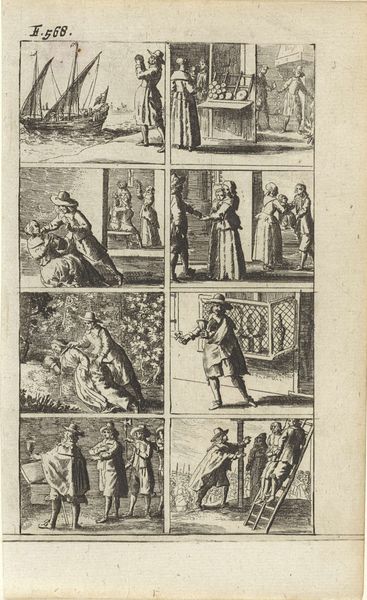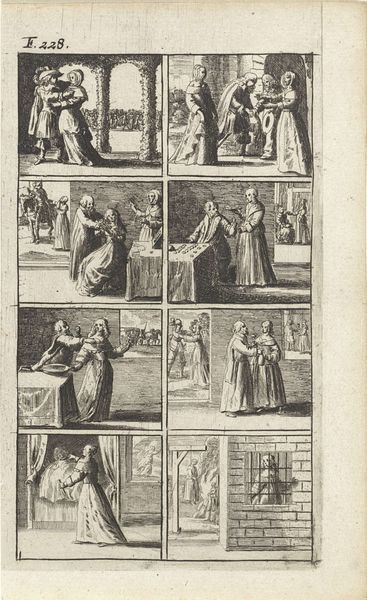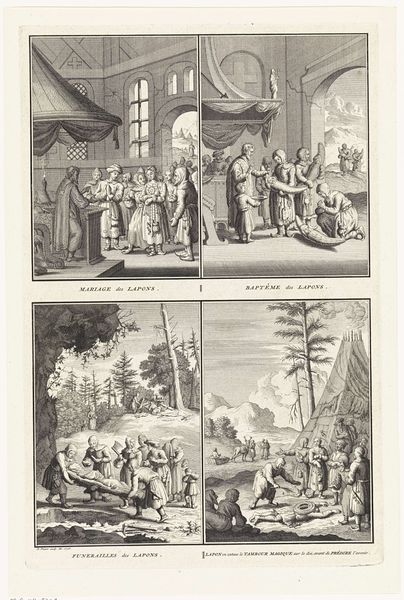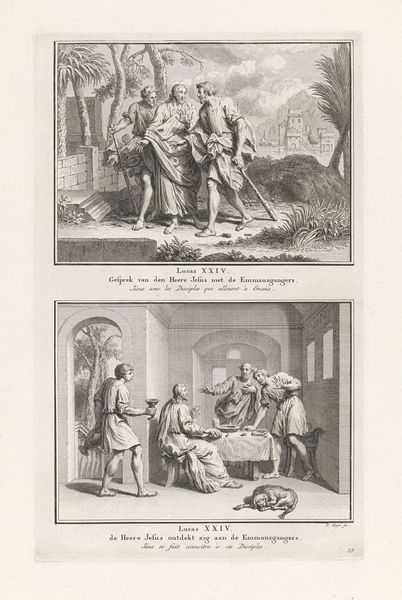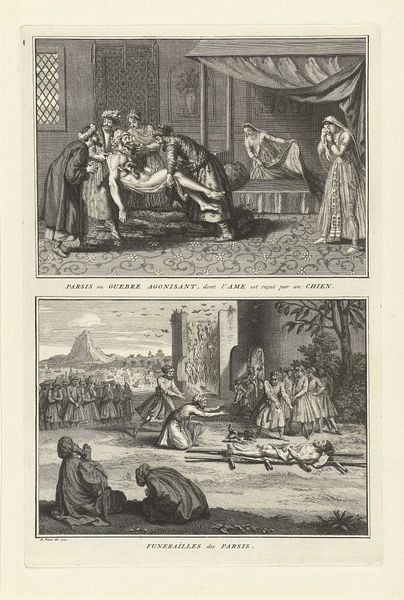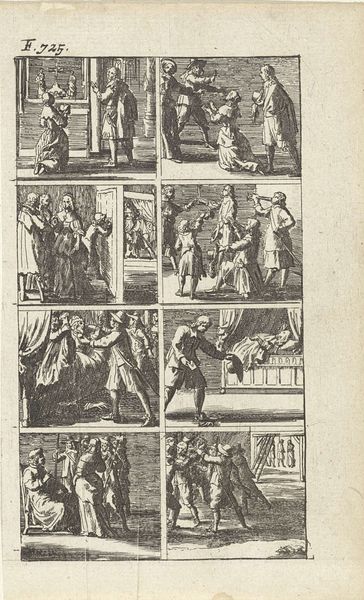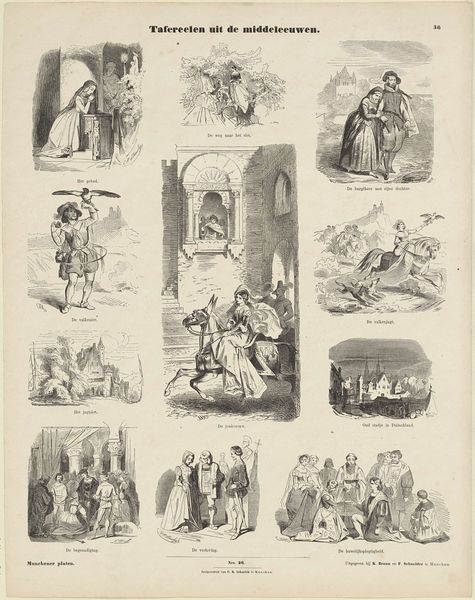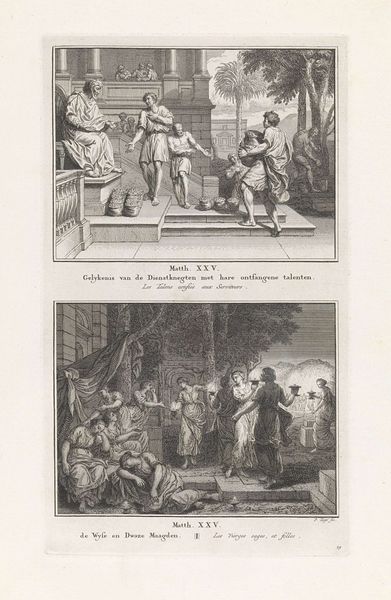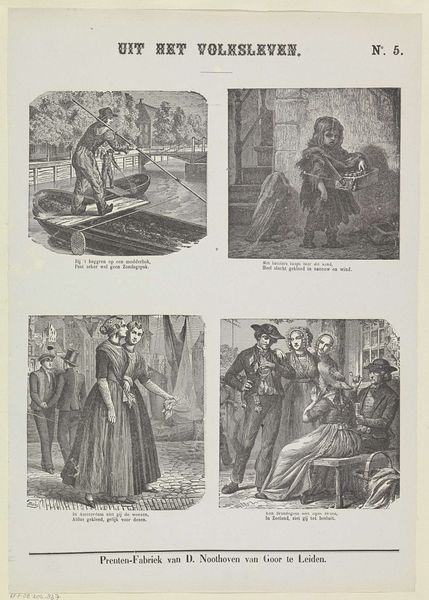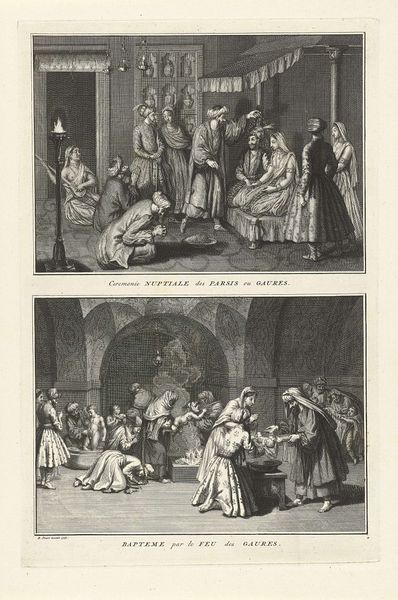
print, engraving
#
narrative-art
#
baroque
# print
#
asian-art
#
old engraving style
#
line
#
history-painting
#
engraving
Dimensions: height 336 mm, width 216 mm
Copyright: Rijks Museum: Open Domain
Curator: Bernard Picart's "Voorstellingen van brahmanen die boete doen," or "Representations of Brahmins Doing Penance," created in 1721, is a compelling print, currently residing here at the Rijksmuseum. What are your immediate thoughts, Editor? Editor: Well, Curator, the intensity hits you first. These vignettes – almost like scenes from a play – depict asceticism with such graphic precision. The use of line is amazing – so fine, yet so strong in conveying suffering, almost operatic. It makes you wonder about the artist's intent. Curator: Indeed. The material itself – the print medium – lends itself to dissemination and scrutiny. These images, etched into copper and pressed onto paper, speak to the proliferation of knowledge and perhaps the exoticization of Eastern practices during the Baroque period. The engraving style underscores a meticulous, labor-intensive process reflecting the very themes it represents. Editor: And the repetition, panel after panel. One wonders if Picart saw this as an exploration of spirituality or, maybe a bit more cynically, an indictment of what some might perceive as unnecessary suffering. Is it genuine devotion, or performative piety rendered through European eyes? Curator: That tension is key, I think. The means of production reveals a cultural exchange, filtered and repackaged for a European audience. What materials did Picart have access to? Were these secondary sources, stories from travelers? Each mark on the plate tells a story, not just of the Brahmins, but also of Picart's world. Editor: There’s an undeniable voyeuristic quality to it. It’s compelling, no question, but it sits a bit uncomfortably. You’re looking at supposed enlightenment but it’s staged somehow, distanced by time, culture, and of course, by the nature of the printing itself. Curator: Precisely. We must remember, though, that printmaking itself can be viewed as a form of social labor. Prints like this helped shape and reinforce social narratives about "the other". Editor: Well, now I can't help thinking about the hands involved, both in these acts and in creating these images. That link between physical effort and some sort of "higher" plane…it does make you think, doesn't it? Curator: Absolutely. This print invites us to examine the complex intersections of belief, representation, and the social forces at play in its making and distribution. Editor: Yes. Food for thought, certainly. Makes you grateful for this conversation. And perhaps, makes you feel just a little less penance-worthy today.
Comments
No comments
Be the first to comment and join the conversation on the ultimate creative platform.
